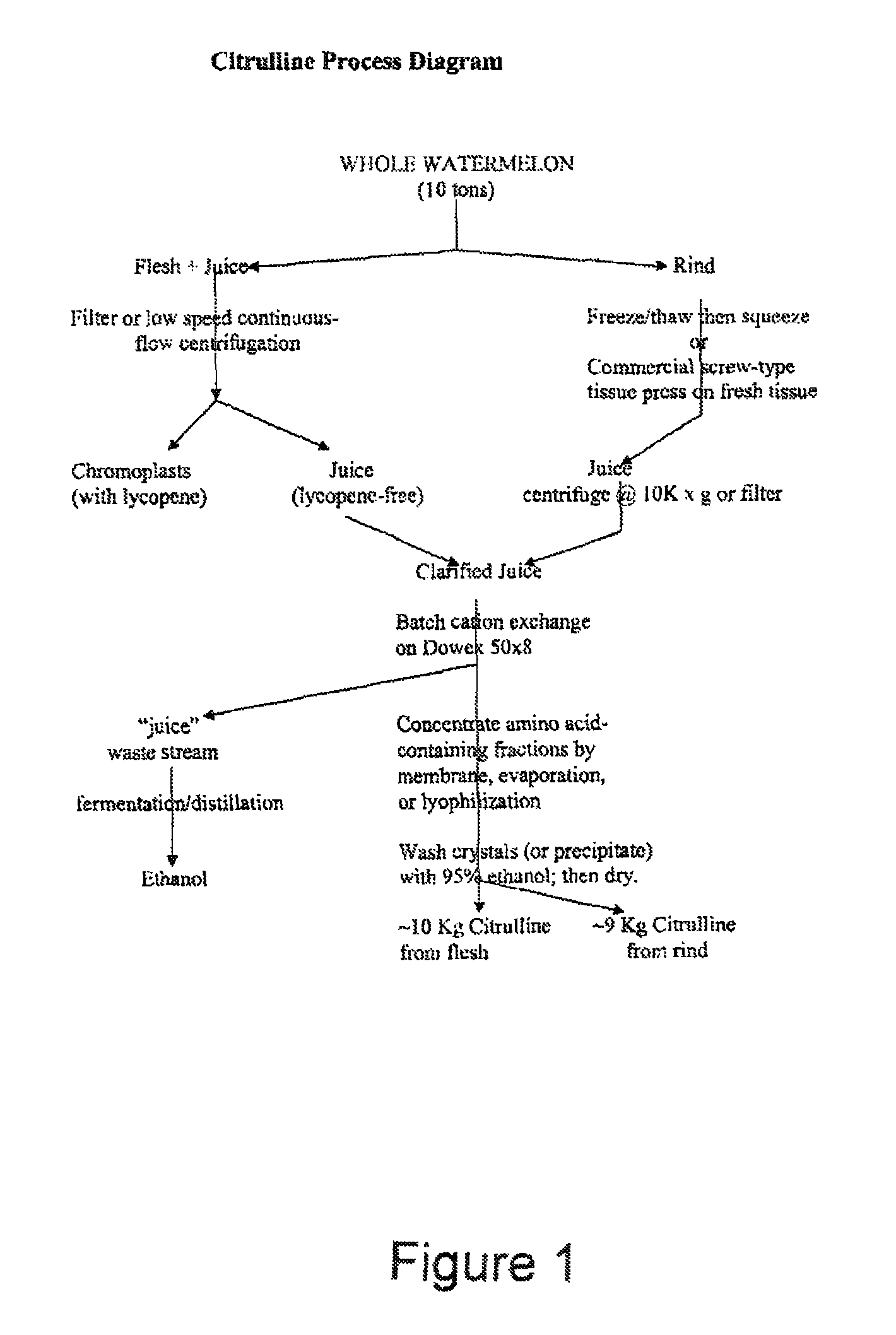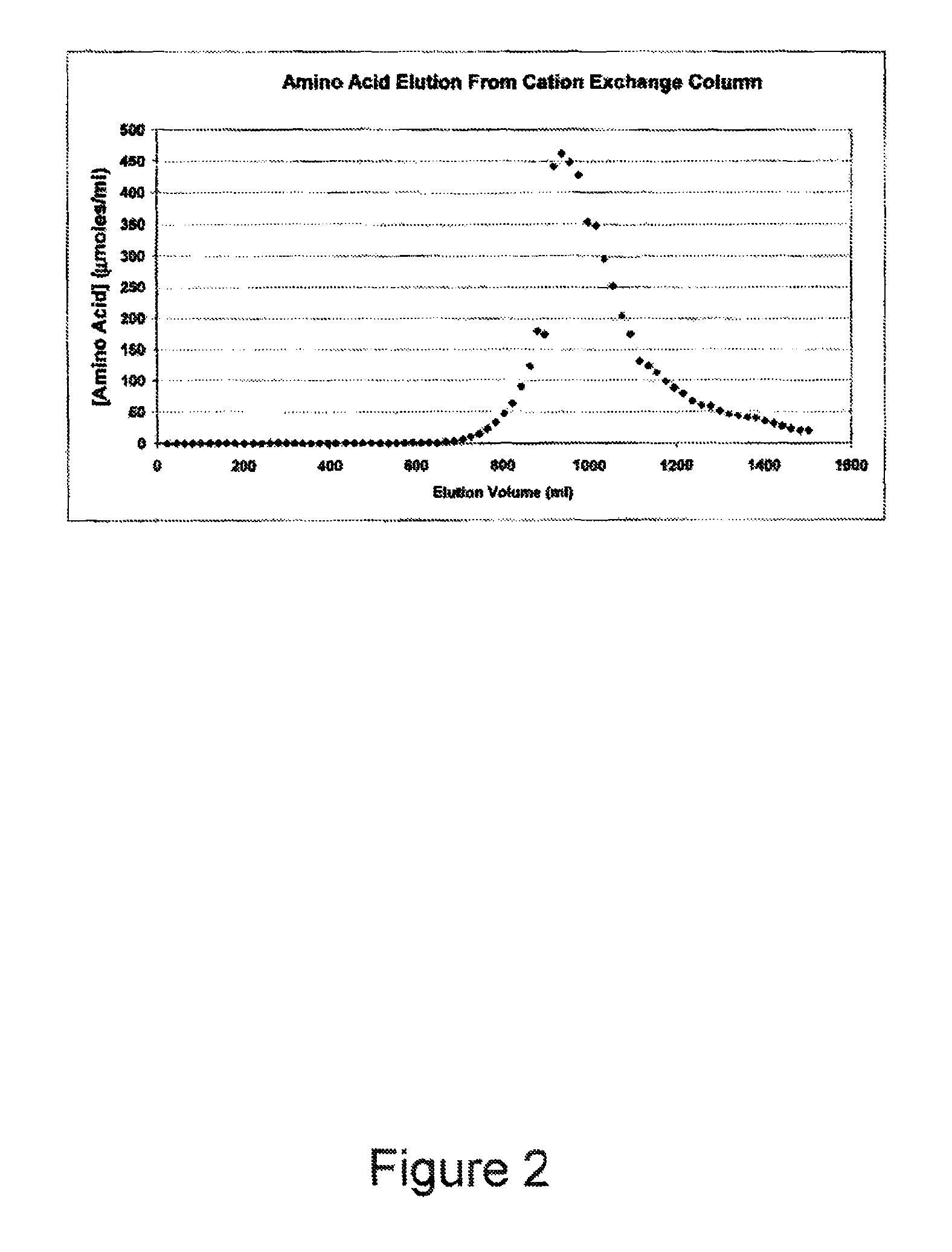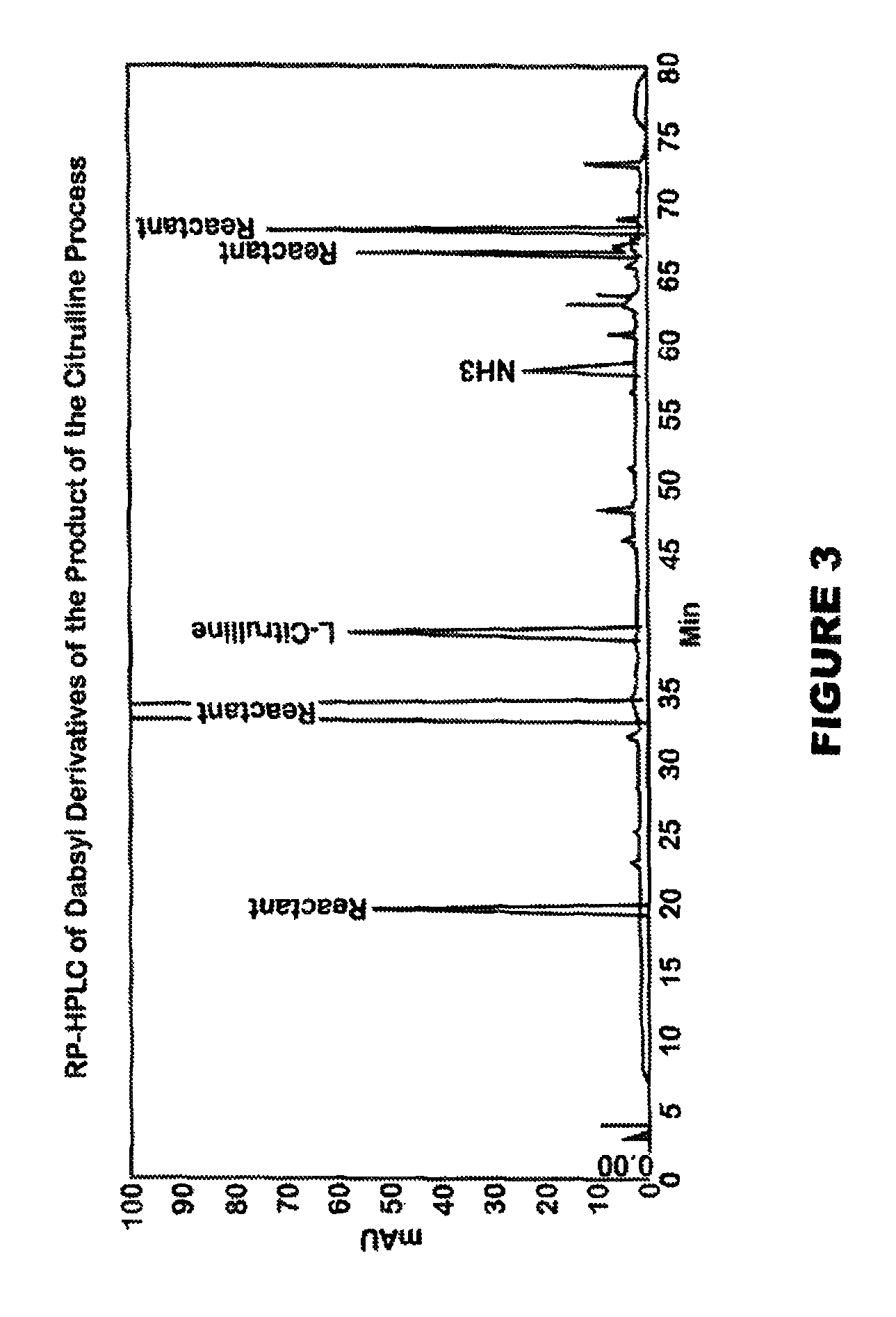Process for the production of L-citrulline from watermelon flesh and rind
a watermelon and rind technology, applied in the field of new watermelon rind recovery process, to achieve the effect of increasing the availability of large quantities of l-citrullin
- Summary
- Abstract
- Description
- Claims
- Application Information
AI Technical Summary
Benefits of technology
Problems solved by technology
Method used
Image
Examples
example 1
[0030]Citrulline was prepared from whole watermelons produced in Oklahoma using the same process shown in FIG. 1 with the exception of the amount of watermelon treated. Watermelon juice was prepared from watermelon flesh or rind by grinding and / or pressing. The liquid was separated from residual solids by settling then filtration and / or centrifugation. Lycopene-containing chromoplasts were removed from the juice of watermelon flesh by settling at pH 3 or by centrifugation @ 2,000×g for 15 min.
[0031]Citrulline separation was effected using a five hundred ml bed of Dowex 50Wx8-400 cation exchange resin. (Dow Chemical Company, Midland, Mich.). The resin in the column was washed with 2% H2SO4 then water to convert the functional groups to the H+ form. The pH of the watermelon juice extract was adjusted to pH 3 before application to the column. Five liters of chromoplast-free, pH adjusted watermelon juice was applied to the cation exchange resin bed. After sample application and separati...
PUM
| Property | Measurement | Unit |
|---|---|---|
| Temperature | aaaaa | aaaaa |
| Adsorption entropy | aaaaa | aaaaa |
| Cation exchange capacity (equivalent) | aaaaa | aaaaa |
Abstract
Description
Claims
Application Information
 Login to View More
Login to View More - R&D
- Intellectual Property
- Life Sciences
- Materials
- Tech Scout
- Unparalleled Data Quality
- Higher Quality Content
- 60% Fewer Hallucinations
Browse by: Latest US Patents, China's latest patents, Technical Efficacy Thesaurus, Application Domain, Technology Topic, Popular Technical Reports.
© 2025 PatSnap. All rights reserved.Legal|Privacy policy|Modern Slavery Act Transparency Statement|Sitemap|About US| Contact US: help@patsnap.com



